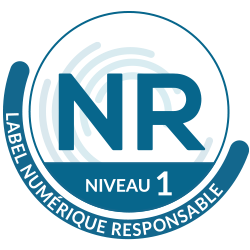What is Quality Assurance (QA)?
Quality assurance is a set of processes that validate the manufacturing procedures followed.
This helps prevent manufacturing defects and guarantee product quality.
What is Welding Quality Control (QC)?
Quality control is the process of confirming that a product conforms to specifications. It includes the verification and testing of manufacturing procedures and finished products. The results of these tests are compared with a set of defined acceptance criteria.
By performing QC tests during manufacturing, defects can be identified and rectified.
If necessary, adjustments can then be made to the manufacturing process to prevent any further defective production.
In welding, quality assurance and quality control play an essential role in ensuring the production of solid, reliable welds and minimizing rework.

Why are QA/QC processes necessary?
Quality assurance and quality control play an essential role in ensuring the production of sound, reliable welds and minimizing rework.
Supply contracts for fabrications may specify compliance with certain welding standards, which in turn may stipulate adherence to defined quality assurance and quality control processes.
In some cases, the customer specifies a more rigorous QA/QC regime than the current standard. In some disciplines, compliance with certain welding standards is a regulatory requirement, making the use of specific QA/QC processes mandatory.
These disciplines include pressure vessels, structural steel and lifting equipment. Quality assurance and quality control are also good ways of showing that due diligence has been exercised during the manufacturing process. It also captures the condition of the product during and at the end of the manufacturing process.
This information can be used in the future to counter claims of defective products.
What can happen if QA/QC procedures are not followed?
Failure to carry out adequate quality assurance and control during manufacture can result in welds of variable quality. When weld defects appear, rectification is necessary and can delay delivery of the product to the customer. This can also result in a loss of reputation for the manufacturer.
If the contractual agreement with the customer requires compliance with standards, and the applicable quality assurance and control requirements have not been met, this can lead to contractual problems and legal sanctions. The latter scenario is all the more likely if quality problems are identified after manufacturing has been completed, leading to delays and, worse still, product failure during use.
QA/QC documents
A Quality Assurance Plan (QAP) provides the framework for QA/QC activities before and during the manufacturing process. The QAP defines the schedule of inspections and tests to be carried out. It defines the roles of key personnel and assigns responsibilities to the various roles. The details, class and compliance standards of welds are defined by the design engineer, taking into account the application and customer requirements. This will determine the quality control requirements for the project. On the basis of the above, the welding engineer generally creates the welding documentation for product manufacture. These documents include Welding Operation Descriptions (WPS) and a Weldmap. They form the basis of welding QA/QC.

Capture: WPS created with Welding Cloud
WPS are instructions on how to perform specific welds. They typically specify the welding standard, welding process, weld type, weld preparation, preheating and postheating requirements, welding position(s), interpenetration temperatures, electrode/filler specifications, gas details, amperage/voltage range, speeds, current type, polarity, etc. Weldmap – shows the location of welds and assigns the appropriate DMOS to each weld.

Weldmap included in a PDF welding notebook produced with the Welding Cloud solution

Weldmap included in a PDF welding notebook produced with the Welding Cloud solution
Qualification of WPS and welders
Welder Qualification (WPQ) Welder Qualification must be performed to confirm the welder’s ability to deposit sound weld metal for a specific weld type, material and weld position. WPS Qualification WPS qualification is used to determine whether welds are capable of providing the characteristics required for its application. The extent of testing required to qualify the WPS will depend on whether pre-qualified weld preparation and consumables are used. In some cases (e.g. where pre-qualified standard welds are used), minimal or no testing may be required. Where DMOS qualification is required, weld test coupons are manufactured in accordance with the DMOS and the compliance standard. Non-destructive testing (NDT) and destructive testing (DTP) are then carried out on the test coupons to check for weld defects and joint properties. A Procedure Qualification Record (PQR) is used to document weld qualification.

Example of a Welding Procedure Specification (WPS)
QS must be performed to confirm the welder’s ability to deposit sound weld metal for a specific weld type, material and welding position.
The welder’s qualification is valid for a range of materials, thicknesses, positions and weld types, according to the qualification standard.
It is documented on the welder’s qualification test certificate and the welder’s performance qualification.

Example of Welder Qualification (WPQ)
Inspection and test plan, test follow-up sheets – These documents are created on the basis of the WPS and design documentation. They are completed as QC inspections/tests are carried out, for recording purposes.
QC before/during/after welding
QC before the actual welding generally includes the following elements:
- Confirmation of the material to ensure that the chemical composition and mechanical properties comply with the design specification – usually done by consulting material certificates.
- Joint preparation – to ensure that preparation conforms to the design specification and/or the specified welding standard. This includes dimensional and cleanliness checks.
- Joint fit check – flank spacing, pointing and reverse support (etc.) comply with WPS and compliance standards.
- Welder qualification – check that the welder is qualified to carry out the welding.
QC during welding
- Check that pre-heating and inter-pass temperatures are within the limits specified in the WPS.
- Confirm that the filler material complies with WPS specifications.
- Other checks: cleaning between passes, weld bead appearance.
- Confirm that the WPS is being followed
- Non-destructive testing as specified
QC after welding The extent of QC depends on the welding conformity standard, the class of weld and the agreement with the customer. Testing can be either CD or NDT.
How to manage and trace the stages of quality assurance and welding quality control?
Sirfull offers an online solution for managing and tracing the various stages of production preparation and follow-up.
Follow-ups and documents required by quality assurance and quality control to prepare and monitor the correct manufacture of equipment are centralized in thecollaborative Welding Cloud environment.
Welding Cloud is adapted to the work of welding engineers, welding coordinators, quality controllers and inspectors.

Screenshot of Welding Cloud’s “Equipment” module, “Manufacturing preparation” phase

Screenshot of Welding Cloud’s “Equipment” module, “Manufacturing follow-up” phase.



